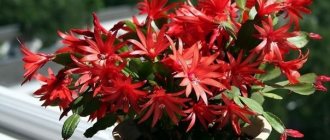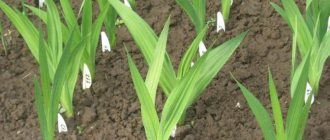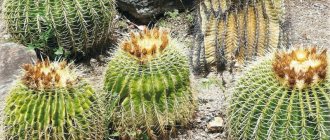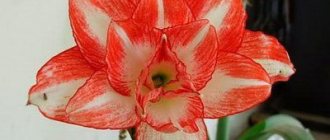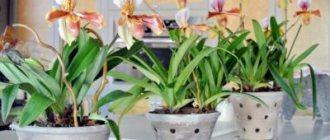The South American flower hippeastrum is not a new plant for gardeners. It has long taken pride of place in the list of the most common indoor crops. The most decorative are the large-flowered varieties - their funnel-shaped flowers sometimes exceed 25 cm in diameter. But not many people manage to admire these beautiful inflorescences. Green mass growth is often observed in indoor conditions. To understand how to make hippeastrum bloom, you should know the features of its development and the necessary growing conditions.
Features of the flowering period
In winter, hippeastrums begin their flowering period. Numerous varieties of this plant have a wide variety of inflorescence colors from snow-white to purple. Some varieties delight with a pleasant aroma.
Blooming hippeastrum - a gardener's joy
Hippeastrum blooms spectacularly. The flowers are very large, funnel-shaped with a wavy edge of the petals. Collected in inflorescences of several pieces, which sit on tall flower tubular arrows. Mature plants with a large bulb can produce 2 or even 3 arrows at the same time.
Beautiful hippeastrum inflorescence
At the very beginning of flowering, special attention should be paid to the watering regime. This plays a decisive role in the successful growth of arrows and the blooming of flowers. There are a number of important points:
- when the shoots are 6-8 cm high, the plant is watered moderately;
- as the arrows grow, the frequency of watering and the degree of soil moisture increase;
- when the arrow grows to 13-15 cm, the plant is watered with a weak solution of manganese;
- after 5-6 days, mineral phosphorus fertilizers are used.
Note! If you increase the amount of watering ahead of schedule, shoot growth will slow down significantly.
During flowering, the flower is handled with extreme care. You cannot move the pot to another place, or expose the plant to sudden temperature changes. Drafts or exposure to cold air can lead not only to the cessation of shoot growth, but also to the falling of buds.
What should you do after purchasing?
The peculiarity and distinctive feature of hippeastrum is the peduncle - a hollow tube, and, for example, in Ammarilis, the flower arrow is filled with tissues. The peduncle is cylindrical, the surface is smooth, covered with a waxy coating. The arrow extends 40-80 cm in height, depending on the variety and age of the flower. The color is light green, some varieties are dark.
After flowering, the flower arrow of the hippeastrum gradually dies. It is dangerous to immediately cut off the peduncle; the integrity of the bulb is damaged (the risk of rot and infection with harmful infections). Only faded flowers are removed first.
Pro Tips:
- Buy Hippeastrum in autumn or spring (to replant immediately).
- Carefully examine the bulb itself (it should be hard, juicy, at least 6-7 cm in diameter, without rot, reddish marks or seals).
- Turn the pot over so that the root shoots should be visible through the drainage holes).
The landing procedure is simple:
- Select the size of the pot, treat the inner surface with steam or boiling water.
- The substrate and drainage are prepared, disinfected (calcined in the oven or spilled with disinfectants).
- Dry and rotten fragments are cut off, the neck and bottom are thoroughly cleaned, and shoots that are too long are trimmed.
- Treat the onion (soak for 20 minutes) with disinfectants (Maxim, Aktara).
- Dry the planting bulbs.
- 2-3 holes are made in the container (for water drainage and air exchange).
- 3-4 cm of drainage material is poured onto the bottom.
- The earthen mixture is poured almost to the top.
- Place the bulb in the center and make a small hole.
- The roots are laid evenly.
- Deepen to a third of the bulb's growth.
- Gently pour a stimulant solution (Epin, Zircon, Extrasol) along the edge.
- Place in a bright, warm place.
Why does hippeastrum not bloom, but only produce leaves?
Why does the imperial hazel grouse not bloom, only leaves?
In order for the hippeastrum to release a flower arrow, it needs a kind of stress. For what? Only in cramped conditions will the plant direct its forces to the formation of arrows and buds.
Often, gardeners create excessively comfortable conditions for hippeastrum - they plant it in a large pot, feed it with fertilizers, or water it too often and abundantly. Active leaf growth is affected by fertilizing containing nitrogen. As a result of such care, the plant actively increases its vegetative mass and refuses to bloom.
If you create the appropriate conditions for hippeastrum and strictly adhere to the recommendations regarding watering, fertilizing and planting, the plant will delight you with flowering by spring.
With proper care, hippeastrums bloom actively
Description of the plant
The bulb of this perennial has a spherical shape, but in rare cases it can be in the form of a cone. The diameter of the bulb depends on the type and varies from 50 to 100 mm. There may be small roots at the base. The stem is short and thick with easily detachable scales.
Hippeastrum
The leaves are belt-shaped, grooved-keeled. The leaf length can reach 70 cm, while the width is only 4-5 cm. They are usually bright green, but sometimes they can have a burgundy color at the base. Hippeastrum leaves are collected in 2 opposite rows.
The peduncle is hollow, leafless, tubular. It can be either low - 30-35 cm, or very impressive - 75-80 cm. The inflorescence usually consists of 2, 4 or 6 bisexual buds of a funnel-shaped or tubular shape.
Interesting! The color of the flower can be very diverse - from white to dark burgundy, but still the most commonly grown are hippeastrum red and hippeastrum white.
After the plant blooms, the fruit appears, which is a small box that looks like a miniature cocoon. It contains small seeds. By the way, they have excellent germination.
Reasons for lack of flowering
Getting hippeastrum to bloom is not so easy. First of all, you need to pay attention to the factors that can affect the appearance of flowers. They will indicate the reason why the hippeastrum does not bloom.
Alternating vegetative and dormant phases
Flower hippeastrum red, white, grand diva and others
The development of a flower has its own characteristics - a period of active growth and flowering alternates with a period of rest. Only if the cycle is followed does the plant bloom. For this reason, they create an environment conducive to a smooth transition of the flower from one phase to another.
The dormant period lasts from September to November. Closer to the beginning of this phase, reduce the frequency of watering and stop fertilizing. The pot is moved to a cooler and shaded place. Gradually, the growth of leaves will stop and they will begin to wither and dry out.
It is important to know! The resting phase should occur as naturally as possible. You should not move the flower from place to place, or remove drying leaves.
At the end of November, the hippeastrum begins to awaken. To do this, place the pot in a warm and bright place. Watering is gradually increased.
Degree of bulb penetration
The correct planting of the hippeastrum bulb plays an important role. The depth of its placement in the ground directly affects the presence or absence of flowers.
When planting a bulb, it is buried only 2/3 of the way, and the rest should be above the soil surface. When planting, the soil is either ready-made or a mixture of turf soil, peat and sand in a 2:1:1 ratio.
Proper planting of the bulb is the key to flowering
Conditions of detention
Hippeastrum can bloom only in the most favorable conditions. To do this, you should take into account a number of recommendations that relate to keeping the flower indoors.
Lighting
Diffused but intense light is preferred. The ideal option for placing the pot would be a southwest window.
Humidity
Optimal humidity levels are 70-80%. Foliar spraying is not recommended. To increase the humidity level, it is recommended to install trays with wet pebbles or expanded clay in close proximity to the pot. The ideal option is a humidifier.
Watering
During different periods of development, the abundance and frequency of watering differs. In a state of active growth and flowering, the soil is moistened regularly as the soil dries out by 2-3 cm. After flowering, watering is reduced. During the dormant period, the soil is moistened no more than 2-3 times.
Temperature
Hippeastrum grows and develops best at temperatures of 20-22 ℃ above zero. In winter, it is reduced to 12-15 ℃.
Soil composition
For planting bulbs, use a nutritious and breathable substrate. It can be purchased at a garden center or prepared from peat, sand and turf soil at home.
Feeding
Mineral fertilizers begin to be applied when the height of the flower shoot is 12-15 cm. Re-feed twice during the flowering period with a frequency of 14-16 days. As a fertilizer, it is preferable to use mixtures in which phosphorus and potassium predominate.
Note! To understand why hippeastrum does not bloom, care at home should be carefully analyzed. If you take proper care and do everything according to the rules, the result will be accurate.
By following all the recommendations listed above, you can expect that in December the hippeastrum will not only begin to produce leaves, but will also bloom.
Pot size
The flower has a peculiarity - it grows better in close quarters. Only in a small pot does the bulb produce flower arrows. The size of the container for planting should exceed the diameter of the bulb by no more than 1-1.5 cm.
On a note! The roots of the hippeastrum grow deep, without growing in width at all. The pot is chosen to be deep and of small diameter.
The pot needs to be narrow and deep
Diseases and pests
Only a healthy plant can grow, let alone bloom. Hippeastrum affected by diseases or pests is not able to form an arrow and inflorescences. If the flower care rules are not followed, the bulb may suffer from powdery mildew and various rots.
The main cause of trouble is excessive watering. If the plant is already affected, the bulb is removed from the pot, cleaned of scales damaged by the disease and processed. Additionally, replanting is carried out with a complete replacement of the soil into a disinfected container.
Additional Information! The flower also suffers from pests. The most frequent guests are thrips, spider mites and aphids. In such a situation, first of all, the flower is isolated from other plants, and then help is provided by treating it with insecticides.
How to “deceive” hippeastrum and make it bloom
For a long time, inexperienced gardeners cannot cope with the fact that the plant does not bloom. Why force hippeastrum to throw out flower stalks? Their appearance indicates that a dormant period has passed, and if the plant does not rest, it may die. In addition, the flowers are quite beautiful and are a kind of reward to the plant owner for good care.
How can you make hippeastrum bloom: only by fulfilling certain conditions and rules. To produce a peduncle, the bulb must go through a dormant period. If the plant does not go into hibernation, the leaves remain green and continue to grow, then you need to perform the following procedures:
- the container with the plant is placed on its side - the hippeastrum remains in the box;
- all fertilizing is stopped, watering is reduced to a minimum;
- the plant is sent to a cool and darkened room;
- after a month, the green part will wither and turn yellow - at this time it is pruned.
An attempt to immediately place the container in a vertical position can provoke the hippeastrum to come out of sleep. He is kept in a supine position for 2.5 to 3 months - this time is enough for him to rest and gain new strength.
After a few months, the hippeastrum will release its first leaf, signaling the end of the dormant phase. The container is transferred to its usual place, the bulb is transplanted into fresh soil. Again, watering and fertilizing are added to the schedule - until the fourth leaf appears. After this, they stop fertilizing the soil. If all procedures were carried out correctly, a peduncle will soon appear.
Hippeastrum is an unusually beautiful plant with a slightly capricious character. Observing periods of rest in winter and activity in spring, timely moistening of the soil and mineral fertilizing will allow you to admire its luxurious buds twice a year.
Caring for a wilting plant
So, your hippeastrum has faded, what to do next? The essence of care is to create favorable conditions so that the bulb regains its strength and becomes ready for the next flowering.
To do this, stop watering from mid-September and wait until the entire above-ground part of the plant has completely withered. Cut the stems to a height of 15 centimeters from the edge of the bulb. What to do with the arrow? As soon as the remaining part of the peduncle is completely dry, carefully remove it using the scrolling method. Place the pot with hippeastrum in a dark place where the air temperature is from ten to thirteen degrees Celsius.
This is the most optimal mode for bulb dormancy. In these conditions it should remain until the end of January or beginning of February. To awaken, the bulb requires time and the same living conditions. Simply put, return the pot to where it was before the plant went into hibernation, and proceed to the previous regime of caring for it.
The flowering of hippeastrum is a complex process that requires enormous effort from the bulb. It can acquire strength only if it stays in nutrient-rich soil. You must fertilize this soil and change it periodically.
With one flowering of hippeastrum per year, the time for the bulb to recover is nine months. More frequent flowering can be achieved if the plant is not allowed to rest, but this will soon prevent the bulb from producing flowers.
Secrets of forcing planting material
Experienced flower growers calculate the time for the plant to bloom on holidays - birthdays, New Year, March 8th.
This method of forcing is very simple and consists of 2 stages.
At the beginning of autumn, containers with flowers are placed in cold rooms.
The room temperature should not be higher than 14-16°C.
Usually they use garages, closets, dachas, verandas, loggias. After this, they stop applying fertilizers. Watering should be minimal. Then, for a certain time, until the soil dries completely, the plant stops watering completely.
After the bulbs rest during this dormant period, the containers are moved to lighted rooms. Room temperature should be above 21-23°C. Then the bulbs begin to be watered abundantly and fed with complex fertilizers.
After such a period of dormancy, the flower comes to life again. Flower arrows grow on him. After this, flowering occurs after 60-70 days.
Knowing this secret, experienced flower growers pull out this representative of the flora 60 days before the holiday date. And by the required time, Hippeastrum begins to bloom after a period of dormancy.


